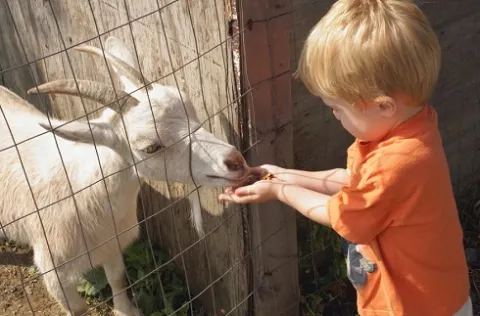
Whether you are gearing up for a busy fall season or are open other seasons of the year, it is always a good time to be thinking about safety on your agritourism destination. Establishing proper safety protocols can help ensure that you are doing all you can to protect the visitors on your destination.
As you know, numerous risks arise once you open your destination to the public. While insurance coverage is necessary, it should not be the only method of prevention. Keep in mind that not even the best insurance plan can alleviate the burden of an injury or illness linked to your destination.
Safety protocols should include walkthroughs and checklists that are communicated to all employees and volunteers on your destination. Hazards that might be obvious to you, may not be to your visitors, so it is important to effectively mark any potential hazards with signage.
The National Children’s Center for Rural and Agricultural Health and Safety (NCCRAHS) website is focused on Integrating Safety into Agritourism. This center has already created fifteen different walkthrough scenarios and twenty-five activity specific checklists for agritourism destinations to use. NCCRAHS has also developed ready-to-print bilingual safety signage that you may download and use, for free.
Use the following tips to start thinking about hazard areas on your destination:
Signage
Clearly mark all hazards and hazard areas with signs
Make sure signs can withstand the elements and can be read or interpreted by all visitors
Food Areas
Food stands should not be near animals or animal areas
Have hand washing stations readily available
Have the proper food permits
Animal Areas
Use 1 entrance and 1 exit in animal areas with hand washing stations at each end
Do not allow visitors to stand or walk where the animals defecate
Food and drink should not be allowed in animal areas
Hayrides
Make sure driver is well trained to drive around people
Make sure there are safety guards around the edge of the people-carrier
Have a gate that will close the entrance and exit of the people-carrier when it is moving
Have stairs to step up and step down off of the people-carrier
Parking
Parking areas should not be located in a harvested field. Vehicle parts, such as the exhaust pipe,
become very hot when driving and can start the dry crop stubble on fire very easily.
Machinery
Keep machinery out of sight, and if possible, locked.
Scheduling routine safety walkthroughs, using safety checklist, and regularly documenting and communicating with employees the importance of safety on your operation, even during your busiest time of the year, will help ensure that people enjoy their visit to your farm and return home safely.
-Shannon Hoyle, Extension Program Assistant - AgriSafe Certified
